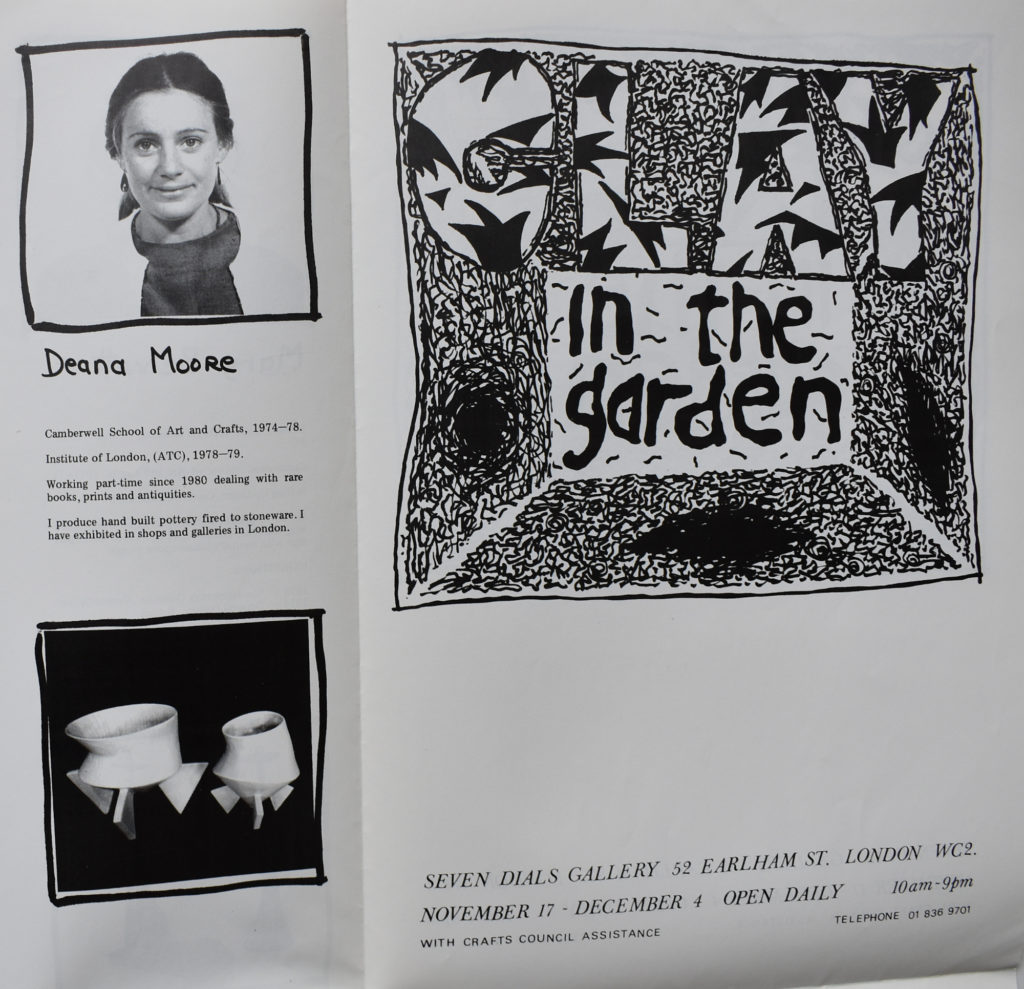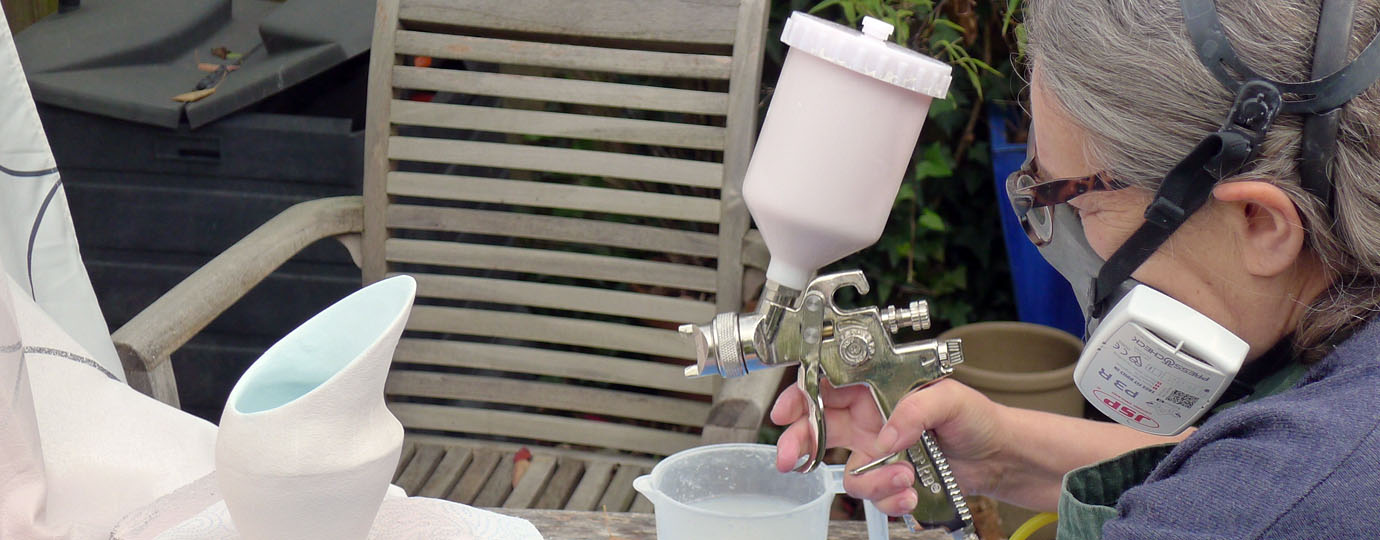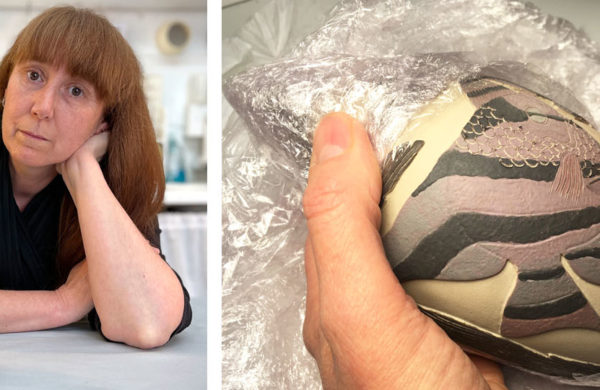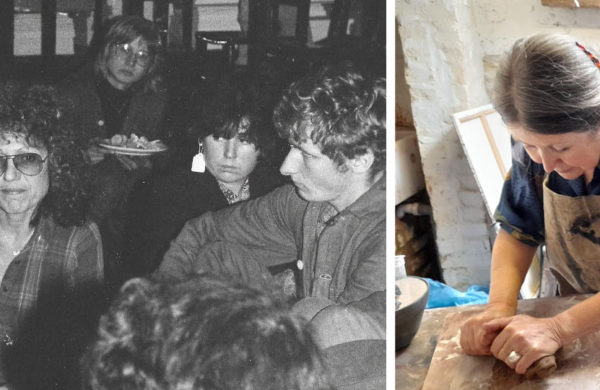Cambridge Ceramics potter Deana Moore describes her introduction to clay and after a 30 year hiatus – how she rediscovered her love for the material:
The early years…
After a thirty year break I have returned to ceramics. I was introduced to pottery by my parents who attended art lessons in evening classes. As children were taken around art galleries. I even remember seeing David Hockney’s first show at the Whitechapel Gallery. I was also lucky, my comprehensive school had a large pottery department and in the 6th form I could go to Camberwell School of Arts and Crafts on Saturday mornings to work.
Consequently I attend Camberwell for foundation course with every intention of applying for ceramics. At the time, Camberwell had a talented team of educators and ceramics teachers, although I didn’t realise it at the time. John Foard and Dennis taught us glazing and were always on hand, milling around, to help us students out. John took us out to Stoke-on-Trent for a few days to see the potteries before they were all dismantled and taken down. A trip to Blackpool to see the lights as we were there and some team building. Colin Pearson and Janice Tchalenko taught us throwing; Martin Smith did a Raku session with us; Glenys Barton taught us mould making. It was Ian Gregory who took us to see the Art of Africa show which did influence me. A quiet shy man. I remember days at the British Museum drawing early ceramics.

Ewen Henderson was my tutor. He guided my direction into hand building. Taught me different hand building techniques which I still use today. Encouraged me to make work in a variety of sizes. He was very interested in glazes and their effects. He was always in the kiln room seeing the latest glaze tests coming out, I now understand why. Ian Auld was head at the time and was very affable.
I had to work part time-Saturdays and holidays to earn money. I was lucky in that through a contact of my parents, I managed to get a part time job in a rare bookshop in Museum Street. It opened my eyes. I met writers and artists, some very famous. Then the street had a butcher and greengrocer then besides galleries and shops. The local policeman used to come in for a chat, a lovely man. A lot of the people who worked on the street knew each other, some I still see today. The shop was like the sitcom ‘Black Books’. Customers were friends, many really wanted to impart their knowledge and I was happy to soak it up. I learnt about early medieval manuscripts, different handmade papers, printing techniques, prints and private presses. I remember an elderly customer bought in his copy of a Tyndale bible. So rare. It was the first English translation of a bible, many copies were burnt, as were the owners, if caught with a copy. Such a small book, A5 size approximately, with such big consequences. Privately printed in Germany and secretly shipped to England. Tyndale died in prison. In fact the St.James Bible is based on the original translation of it. Obviously King Henry Vlll had a copy for the Royal collection.
After completing my BA and attending the Institute of Education in Bloomsbury, pottery was going in turmoil. Many school departments were closing due to cuts. I managed to find a pottery studio to share with some potters from Camberwell, Mary Bennett, Linda Gunn Russell and Angela Atkinson, based in Clapham Junction. I had a few exhibitions. I had a show at the Institute of Education, the Crafts Centre organised one with Harvey Nichols which was taken to New York. I gave some pots to some gallery owners, never to be seen or heard of since. Still waiting for payment!!!
The owner of the shop where I still worked part time was very ill and I was asked to work full time there. Which I did, plus make pots and some teaching in youth clubs in my spare time. After five or more years, I had to stop making pots. I was unable to make money from it and be able to live. Also I had married and become a mother. Consequently a thirty year gap!!
My husband first encouraged me. We converted our green house into a studio. No water or electricity, but a place to start. Somewhere where I could potter around. Most I remembered, coiling came so naturally, I still had my glaze book, my oxides and stains and even my turntable and tools. So I suppose deep down I knew I would return when the time was right. But ceramics had changed, new techniques and styles. I joined a day class in Greenwich to help get back into it. I was mainly left to my own devices but had someone there to help when needed. The teacher helped me to change my glazes. I decided to change from stoneware to Earthenware glazes so I had to start afresh. Evening /day classes do not encourage glaze development. But after reading books and with my teacher’s help, I began to experiment with different glazes. A day session via London potters with Anna Barlow really helped. Made me more focused and gave me a greater understanding how although you are using one glaze, oxide and stains have slight variables which can change the glaze’s surface. So I am still developing my glazes and now being very systematic with the colours and confident in tweaking them.

I am presently still hand building and trying to develop a better surface to my work. The clay is very robust but very groggy and difficult to get a perfectly smooth surface. I am still developing different coloured glazes now I have found a white I like. I am tempted to get a wheel but Jenny Welch, Robin Welch’s widow, warned me about back problems and Parkinson disease from oxides, which is what her husband died from. Perhaps I should start wearing gloves as well as a mask.
I am also an avid collector of contemporary ceramics, especially hand built pieces.





